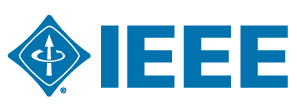News
FEB. 4th, 2021: The IEEE Edge AI for IoT Systems (EA-I2oT) 2022 website is online.
Call for Papers
In order to cope with increasingly data-intensive use cases that require rapid end-to-end processing (e.g., autonomous driving, surveillance, 3D gaming, disaster response, smart healthcare, and tactical reconnaissance), distributed systems are evolving. A major part of this evolution is in terms of: a) smart end user devices or user equipments (e.g., wearable IoT devices, humanoids, drones), b) mobile infrastructure with data transmission capability that can host multi-core processors and storage units, and c) complex applications (e.g., voice over IP, image and video processing, map rendering) that process the data collected and consumed by end user devices. However, strict performance requirements of many such use cases coupled with high Internet latency make rapid data transfer and processing at cloud very unreliable. Thus to achieve more reliable and rapid processing, edge/mobile edge/fog computing based solutions are being widely adopted as unlike cloud data centers, edge computing makes resources available closer to the data site.
However, design, deployment, and security of edge systems are non-trivial as generic distributed/cloud computing methods and models cannot be applied. Instead of model driven and rule centric optimization approaches, data from intelligent measurements using deep learning, reinforcement learning, and other machine learning based approaches can not only improve edge resource management and application satisfaction but also aid in prediction (and defense) of cyber attacks that target the unique vulnerabilities of edge systems. However, the unpredictable and heterogeneous nature of the edge connected environments make learning-based prediction unreliable as more dependability and robustness in predictions and prediction driven actions are required.
Topics of interest:This workshop seeks current, unpublished original works that are not currently under review by any other journal/conference/magazine. Topics of interest include, but are not limited to:
- Model specific design of learning algorithms at edge
- Edge and IoT resource management for learning
- Performance-cost tradeoffs for learning at the edge
- AI/ML-based monitoring, management, and diagnosis in edge computing
- Compression techniques for ML inference and/or training at the edge
- Privacy and Security issues relevant for learning in edge environments
- Applications of distributed machine learning for dynamic edge environments
- Distributed user behavior prediction at edge
- Impact of data and edge resource heterogeneity on learning
- Device-edge-cloud continuum for running neural network based learning
Important Dates
- Submission deadline:March 22, 2022
- Acceptance notification:April 22, 2022
- Submission of Camera-ready Deadline:May 6, 2022
Submission Guidelines
Manuscripts must be limited to 8 pages in IEEE 8.5x11 format. Papers up to 8 pages plus 2 extra pages (with extra page fees) are allowed. Authors may add at most two (2) pages, but only for an appendix, i.e., these two pages contain supplementary material only. The additional two pages will incur overlength charges at $100/page. The reviews will be single-blind. The manuscripts should be formatted in standard IEEE camera-ready format (double-column, 10-pt font) and be submitted as PDF files (formatted for 8.5x11-inch paper). Accepted papers will be published in the combined DCOSS 2022 Workshop proceedings and will be submitted to IEEE Xplore. Submitted papers may not have been previously published in or under consideration for publication in another journal or conference. The reviews will be single blind. Manuscripts should be submitted as PDF files via EDAS. The submission link will open one month before the deadline.For more information on IEEE DCOSS 2022, please visit the main website.
Organizers
- Hana Khamfroush, University of Kentucky, USA
- Dr. Hossein Fotouhi, Mälardalen University, Sweden
- Saptarshi Debroy, City University of New York, New York City, USA
- Shameek Bhattacharjee, Western Michigan University, Kalamazoo, USA
TPC Committee
- Reza Malekian, Malmö University, Sweden
- Sumarga K. Sah Tyagi, Zhongyuan University of Technology, Henan, China
- Keyhan Khamforoosh, Islamic Azad University, Sanandaj Branch, Iran
- Prasad Calyam, University of Missouri, USA
- Soumyabrata Dey, Clarkson University, USA
- Geetha Thamilarasu, University of Washington Bothell, USA
- Chetna Singhal, Indian Institute of Technology Kharagpur, India
- Amitangshu Pal, Indian Institute of Technology Kanpur, India
- Anna Wisniewska, Washington State University Vancouver, USA
